As Mumbai hosts an exhibition on hand-blown glass products, Kolkata-based artist Srila Mookherjee shares this unique process of shaping glass by blowing into it
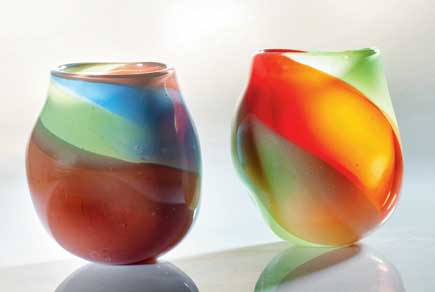
Glass
![]() “To make a hand-blown glass product, you need strong arms more than strong lungs because you are manipulating molten glass stuck at the end of a five-foot long pipe. Blowing is easy because glass inflates easily when it is heated,” says Srila Mookherjee matter-of-factly.
“To make a hand-blown glass product, you need strong arms more than strong lungs because you are manipulating molten glass stuck at the end of a five-foot long pipe. Blowing is easy because glass inflates easily when it is heated,” says Srila Mookherjee matter-of-factly.
Mookherjee, who studied the art of glassblowing under the guidance of Anthony Stern in London during the 1980s, is the first person to set up a glass atelier (Aakriti) in India.
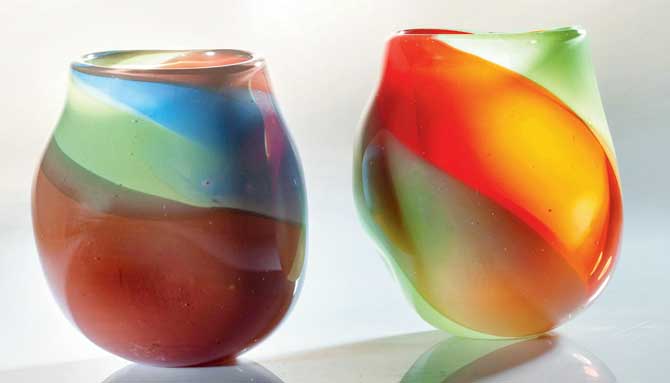
One of the exhibits created by Srila Mookherjee (seen in the pic of Step 3)
The Kolkata-based artist will showcase 80 creations using this technique that involves inflating molten glass using a blowpipe. As the exhibition, titled Found In Nature, begins today at Artisans, she shares the process of glassblowing.
Till: September 12, 11 am to 7 pm
At: Artisans’, 52-56 Dr VB Gandhi Marg, Kala Ghoda.
Call: 9820145397
Email: artisanscentre@gmail.com
1. Gathering
Following the principle that metal sticks to metal when it is hot, we heat a five-foot long blowing iron pipe and gather molten glass just at the tip of the blowing iron in a furnace. In case of making a coloured glass product, we add concentrated colour to the blowing iron and then gather glass over it.
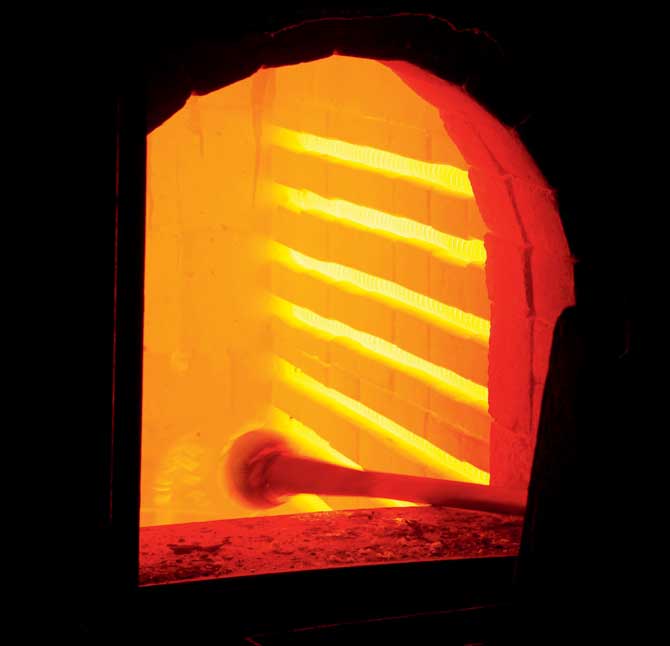
2. Papering into shape
Once the molten glass is gathered on the blow pipe, you shape it using either a wooden block or a wet newspaper. We use a wet newspaper.
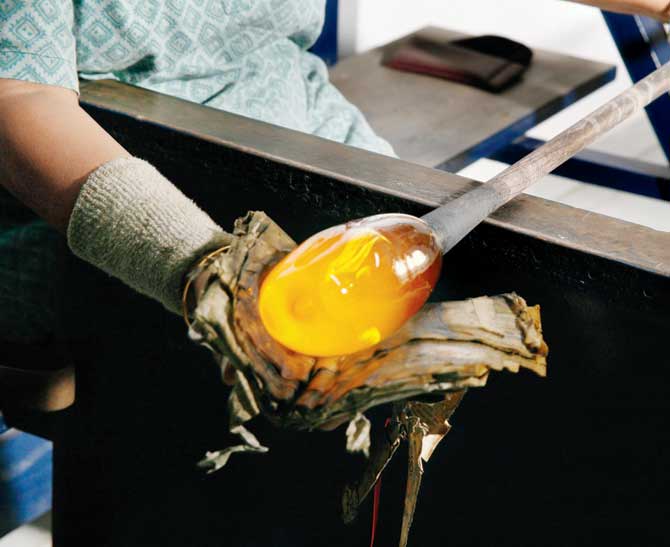
3. Blowing
This is one of the main steps. You blow through the pipe to inflate the glass. Depending on the size that you want, you gather glass again and it is basically a process of reheating, blowing and shaping because glass can only be worked upon if it is hot. Wearing protective glares is necessary.
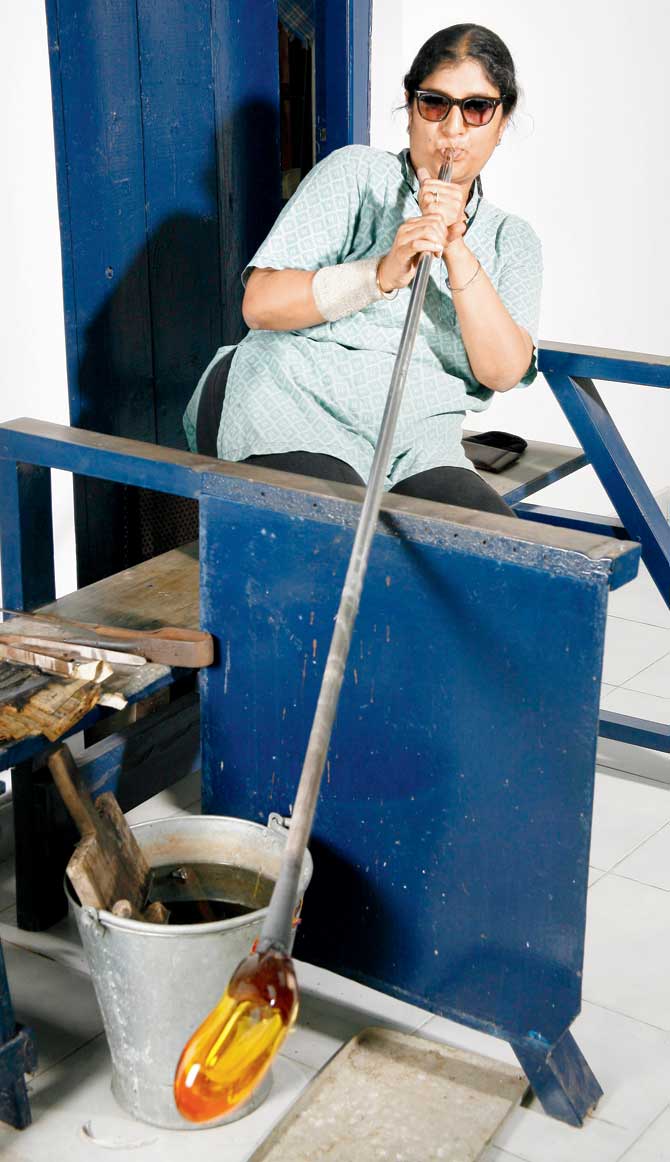
4. Attaching punty
After you finish blowing the bottom of the piece, you attach a punty rod (another hollow pipe) on the other side. Then you cut off the glass from the blowing iron using jacks (a tong-like tool) and work on the other half of the piece. Once it is on a punty, you can spin it into a plate or make it into a bowl.
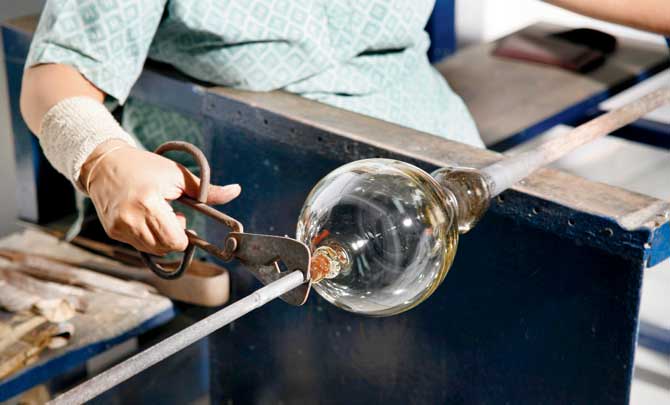
5. The finishing touches
Once you have shaped the glass, cool it for half an hour in annealing oven. While the glass melts at 1,250 degrees Celsius, it is cooled down to 450-500 degrees Celsius. If not, it will shatter. Post this, you need to bring it down to room temperature over 24 hours. Each product has a gloss and shine effect because it is fire-finished.
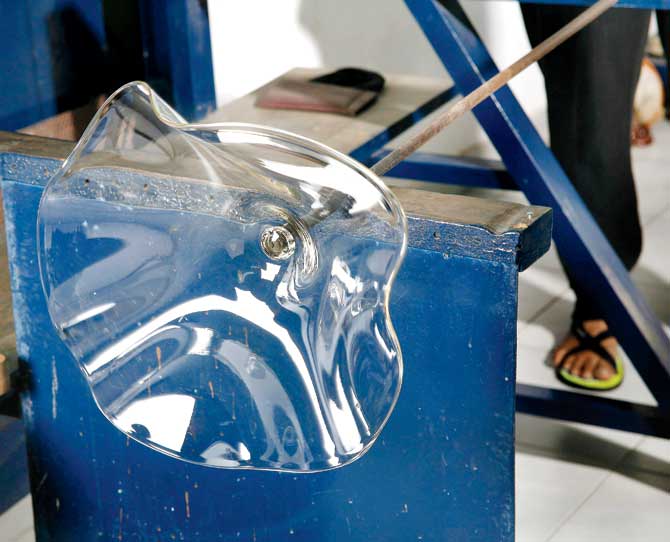
The finishing touches
 Subscribe today by clicking the link and stay updated with the latest news!" Click here!
Subscribe today by clicking the link and stay updated with the latest news!" Click here!









